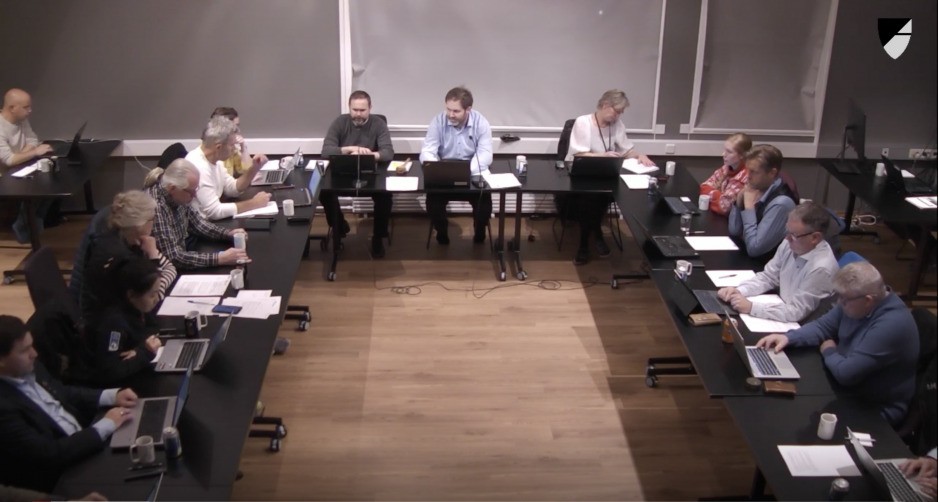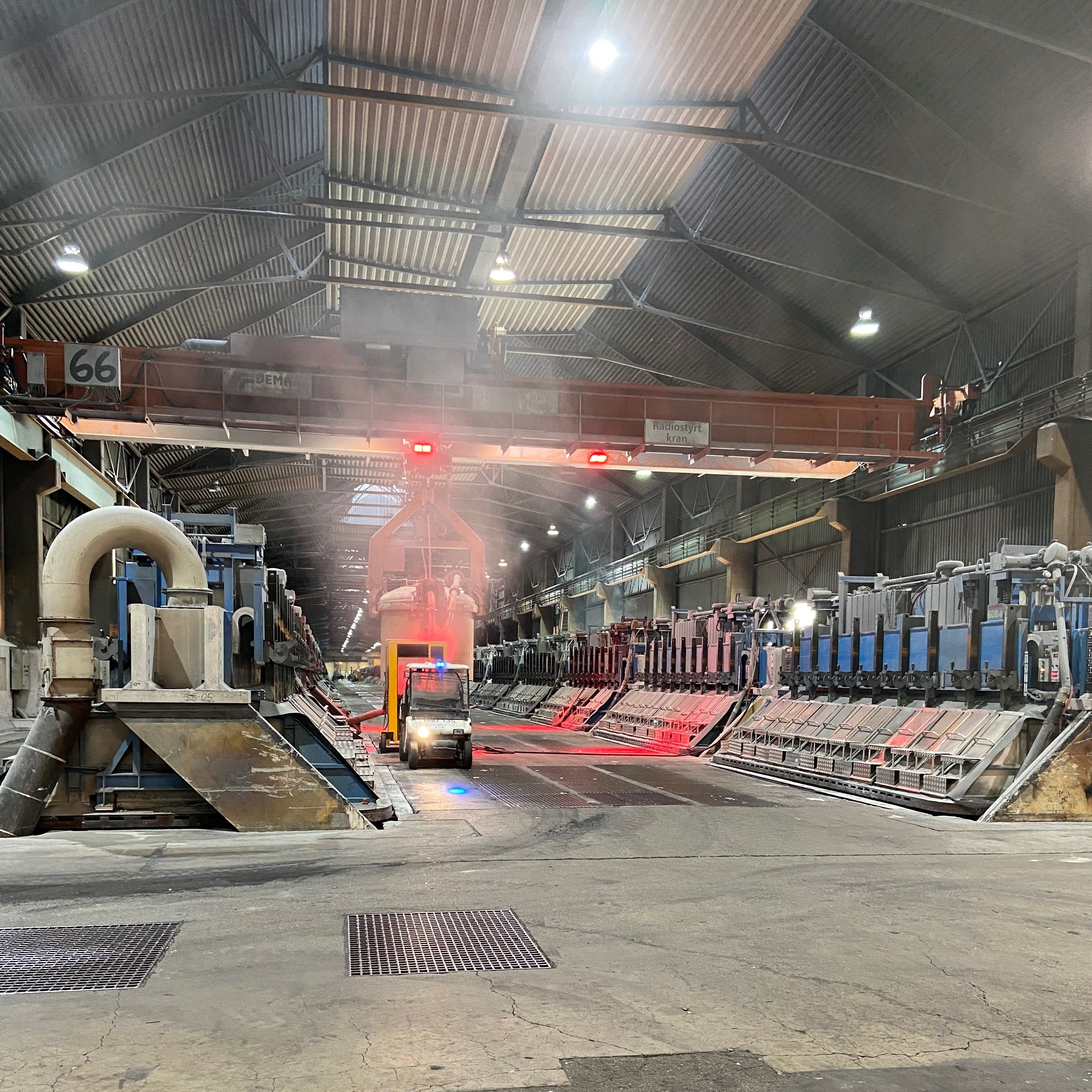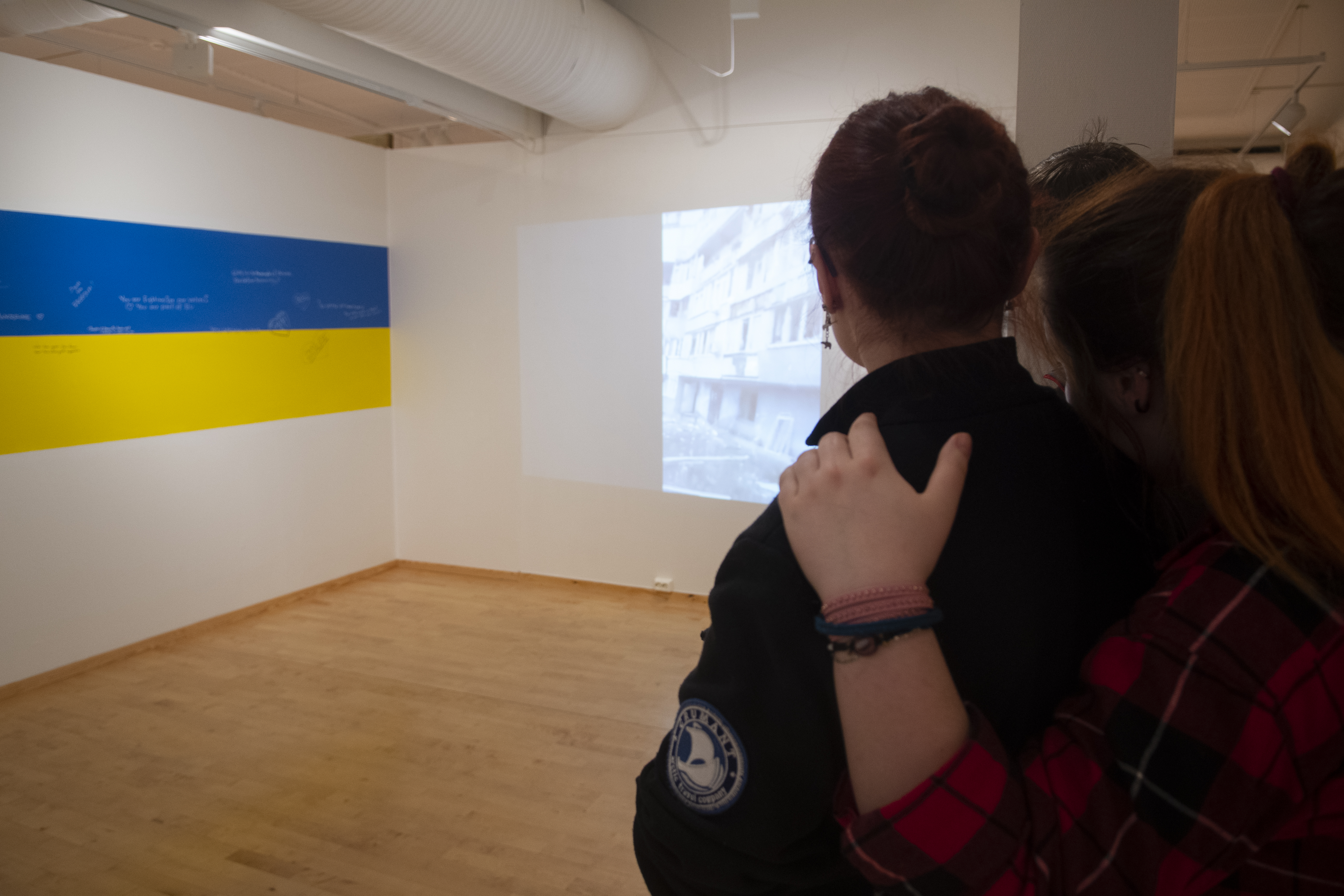Tightening the Reins in Svalbard
Longform: National authorities consider revoking voting rights from foreign citizens, increase the protection of nature, and introduce stronger requirements for safety in the field. Local actors worry about the consequences.
The sun shines its pink autumnal light on the Hiorth Mountain outside Longyear Valley. Only a few days remain until the 2,500 registered inhabitants are wrapped in darkness. An increasing amount of the buildings with bright yellow-lit windows are state-owned. The previous Norwegian government has suggested new regulations for schools and kindergartens, regulations that make clear that special needs-pupils will not have the right to go to school in Longyearbyen.
National authorities also propose that foreigners who have not yet achieved three years of residency on mainland Norway shall not hold the right to vote in local elections. In addition, extensive regulations about protection of nature and traveling in field are out on hearings (please see separate fact boxes).
Surprised
Arild Olsen (Labor) is Local Council Leader in Longyearbyen. He is surprised that the authorities have not reacted before. (Photo: Line Nagell Ylvisåker)
Quick development
Local Council Leader Arild Olsen (Labor) sits in the chair in his office at the center of town, and draws the long lines.
The story about Norwegian Svalbard is the story about a quick development and the eternal question about what the Norwegian state really wants with the Svalbard community. In the 1990s, Svalbard went from being a company town in which everything was owned by the state-owned mining company Store Norske, to becoming normalized with private enterprises and a family community. The state saw that the Svalbard community cost money and wanted private enterprise to contribute to cover infrastructure and operations.
At the same time, the town was granted local democracy.
“The state succeeded with this. Business is changed and Longyearbyen Local Council gets more money from taxes and fees, such as electricity bills and road tax, than we receive in block grants. However, the transition project went faster and more powerful than the authorities had envisioned. The number of inhabitants has nearly doubled”, Olsen says.
Svalbard Policy Goals
The five overall goals:
- Correct and firm asserting of sovereignty
- Correct asserting of the Svalbard Treaty and controlling its being adhered to
- Preserving peace and stability in the area
- Preserving the unique wildlife nature of the area
- Maintaining Norwegian community on the island
More complex community
The quick growth makes the community more complex than before. New regulations must be put in place in order to make sure the community stays within the framework of the Svalbard policy while also being able to operate in a sensible way, the Local Council leader argues.
Svalbard is Norway, however, it is also a different country altogether. The Foreigners Act does not apply. People from all over the world may settle in Longyearbyen as long as they have a place to live and money to get by on.
Welfare legislation does not apply. The city is to be a ‘viable family community’, yet not a lifetime community.
There is an emergency hospital with doctors on call 24/7, though no personal GP’s, nursing home or psychologist. The tax level also reflects that the public service level is lower than that of the mainland.
If Norwegians need more services, they are entitled to receive such in their home municipality on the mainland. Foreigners have to turn to their respective homelands.
The Norwegian state is introducing more laws because the development went faster and further than it had reason to believe only a short time ago, argues Local Council Leader Olsen.
While many see this as a tightening of the reins, he prefers to turn the table around and says it is strange that the state has not reacted sooner.
“Much of what comes now are things we have pointed out a long time ago”, he says.
In example he mentions is that the influx of foreigners increases. By the beginning of this year, some 36 percent of the inhabitants had other passports than the red Norwegian one. They came from more than 50 nations.
“This is not a problem in and of itself, however, it became one with the arrival of Covid-19. We saw that there is a group of people in the Svalbard community who have not rights, that we build Svalbard on the shoulders of the weakest ones. I think we should put a foot on the ground and find out how we can solve this”, the Local Council leader says.
Longyearbyen school has some 225 pupils enrolled
The two kindergartens combined have just over 100 kids. (Photo: Line Nagell Ylvisåker)
Olsen understands that the [Norwegian] state wants more control over who lives in Longyearbyen, however, he fears that the state in its eagerness to do something ends up making a wrong turn. If foreigners in Longyearbyen are not allowed to vote in local elections, it may render local democracy irrelevant. He worries that the consequences of shutting a major group of inhabitants out from local democracy will create a bigger divide in the local population than what is the case today.
“If anyone is excluded from the public debate, it will also make it harder to control hidden power and trade structures”, he says.
Nor does Olsen believe that there is anything to indicate that the share of foreigners will go down even if they are not granted voting rights.
“Nevertheless, the local authority might lose its power. That is an unnecessary big risk for Norway to take. We cannot say 10 years from now that ‘this did not work, so you get your voting right back’”, he says.
In the experience of the chair of the Local Council leader, it is mainly Norwegians who problematize the framework for the Svalbard policy, pushing the rules and want more social rights, probably because Norwegians are used to a broader offer of public services from mainland Norway. While foreigners often experience increased welfare and greater freedom in Longyearbyen than in their respective home countries.
“In the middle of it all, that may be a paradox”, says the LC leader.
He adds that the hearing proposal also may be read as the state’s having lost faith in its meeting the requirement about maintaining a Norwegian community and that we need a new Svalbard whitepaper.
“That is serious enough in and of itself”, Olsen says.
Hearing proposal about voting rights:
- Persons who do not hold Norwegian citizenship have the right to vote and are eligible for local council office only if they have previously been registered as inhabitants of a Norwegian municipality for the past three years before moving to Longyearbyen. (Today, they get the right to vote upon three years residency in Longyearbyen.)
The hearing deadline was 25 October 2021.
By 2023, Norwegian coalmining operations in Svalbard are to be over
(Photo: Line Nagell Ylvisåker)
No to special-needs teaching
Another area in which Longyearbyen Local Council has experienced growth pains and lack of regulations is in the children and youth sector.
“We have to make new choices about directions because we are moving out of the framework established by the Svalbard policy”, Olsen says.
Up until 2007, the Norwegian state owned the school in Longyearbyen. That year, the local council took over and was instructed that the Education Act applies in Longyearbyen “as far as suitable”. The Norwegian Ministry of Education decides what is suitable. The Local Council has repeatedly sent letters to the ministry to ask for clarifications.
Last spring, a regulation proposal was presented in which the ministry suggests that the right to special education at the school in Longyearbyen shall only apply to children who need little or moderate adjustment of their education. Only in special circumstances will children have the right to one-on-one teaching or a personal resource such as an assistant or a special educator, and then only for a maximum of three months.
The Ministry will not increase the economic framework for the local council and stresses that she school is not to compensate for welfare services that are not available in the town.
If kids need more services and more facilitation than Longyearbyen can offer, the parents must consider whether it would be best for the child to live somewhere else.
Unicef and the Norwegian Children’s Ombudsman are amongst those critical of the proposal, arguing that if the regulation were to be adopted, it would constitution of the Children’s Convention as well as the Constitution in Svalbard. The hearing deadline is out, however, the case has not been completely processed yet.
Hearing proposal about the children and youth sector in Longyearbyen
- For the primary school, the proposal limits how much special education Longyearbyen school is to offer. The Ministry also proposes that Longyearbyen Local Council shall not be obliged to offer either cultural leisure activities, homework assistance, school camps or other services normally available through mainland schools.
- Longyearbyen Local Council is obliged to offer kindergarten to at least ten children aged 3+ and at least five children under the age of three.
- Private actors may not offer kindergarten services.
The hearing deadline was 15 August 2021.
Worried
Terje Aunevik is the leader of Svalbard business association. He is worried about whether initiatives from the local authorities will hit what works, rather than what it aims to regulate. (Photo: Line Nagell Ylvisåker)
Worried leader of the local business association
The signals from national authorities, worry Terje Aunevik, leader of Svalbard Business Association.
“One can really tell that the authorities want to reduce the number of foreign residents, tough if that is the target, I am not sure the coming initiatives will be the right medicine”, he says.
He worries that the proposed tools will rather hit what actually works. For instance, he argues that slimming the special education services offered will not make Longyearbyen more attractive to Norwegian families. Nor does the believe that the proposal about withdrawing voting rights from foreigners will work as intended.
“I believe it will rather create more noise”, he says.
Nor is the business leader sure about whether the numbers from Statistics Norway are accurate. Figures show that the number of residents in Longyearbyen has increased for the past two years too.
People who move to Svalbard get the right to hunt, fish, and buy alcohol if they enlist in the List of Residents. There are practically no incentives for de-registering.
In a 2019 report about housing needs, Longyearbyen Local Council wrote that the authorities have less control with who lives in Svalbard than with who lives on the mainland. This also became evident last spring, when the local council sent out 1,800 invitations to resident surveys. According to the local daily Svalbardposten, 150 persons no longer lived at the addresses on which they were registered.
The tax office is currently working on improving the systems in order to secure better information about who actually lives on the archipelago.
At the same time, there are large, temporary building and cleanup projects in the Norwegian settlements. Svea mining community is restored back to nature and in Longyearbyen, contractors are working on avalanche and land slide safety measures, new student housing which was finished last Sunday, a new building for Telenor, a new waste management station, full renovation of the post and bank building (which no longer houses a bank) downtown Longyearbyen, as well as a refurbishment of the town square.
Many of those working on this are probably temporary residents too. In addition, there are some 100 pupils at the newly started folk high school.
“I believe those moving now are Norwegians, not foreigners”, Aunevik says.
Business and Innovation Strategy for Svalbard since 2019:
- New business activity in Svalbard should benefit naturally from using Svalbard’s unique nature or location
- Stable, year-round, profitable jobs are preferable
- Business development and new activity should take place within environmental regulations and goals applying to Svalbard
- New and expanded business activity should be based in Longyearbyen
- It is not a goal for the Svalbard community to grow beyond its present level. The [Norwegian] government does not want to facilitate growth necessitating a need for major investments in new infrastructure
This year as seen lots of construction activity in Longyearbyen
Several housing blocks have been built, amongst others for the student organization. Much of the construction activities will be over by 2023. At the same time, mine 7 is closing down and the town is to get a new source of energy. (Photo: Line Nagell Ylvisåker)
In a public letter published in the local daily Svalbardposten, Aunevik expressed worries about what will happen with Longyearbyen in 2023. Then, Norwegian coalmining operations in Svalbard are to be over. The large-scale deconstruction of Svea is over, the large state and public construction projects are over, and mine 7 in Longyearbyen is to be shut down. On the top of all that, there are extensive proposals about changing regulations that would establish tighter framework conditions for business.
In September, a proposed revision of the Svalbard Environment Act, which was established in 2002 with subsequent regulations, was presented. Global warming hits Svalbard particularly hard, and it makes many species and nature areas more vulnerable. At the same time, the number of travelers to the archipelago has increased. In the 2014-2019 period, the number of commercial guest nights increased by 30 percent. The number of cruise expedition vessels has increased from 23 in 2010 to 73 in 2019.
Seasons are extended and tourists visit new areas. In order to mitigate this, the government has a.o. proposed limiting what areas tourists are allowed to enter, requiring no more than 200 persons onboard a cruise expedition vessel, and banning of motorized traffic on several fjords in the spring. In addition, there is a proposal to swap the tourist regulation with a field regulation that a.o. sets requirements to certification of guides.
“The past two years have been particularly challenging for the tourist industry. Everything was put on hold during Corona. Thus, I now consider it quite remarkable that there are so many hearings now that companies have struggled just to survive”, Aunevik says.
Hearing proposal – the Svalbard Environment Act with relevant regulations:
- Regulate tourist operators’ permission to enter land from boats in protected areas. Abandon the principle that entering is allowed as a main rule, and change it to the main rule being that it is prohibited in protected areas other than in 42 specifically defined areas.
- Cruise vessels navigating in the protected areas may have a maximum of 200 passengers onboard.
- Tightening ban on seeking out polar bears and a requirement about keeping at least 500 meters distance.
- Ban on motorized travel on sea ice in several areas from 1 March
- Ban on breaking permanent ice and ice that is forming, with the exception of the ports in Longyearbyen, Barentsburg and Ny-Ålesund
- Speed limit at sea of 5 knops within 500 meters from selected bird mountains from 1 April to 31 August.
- Minimum distance of 300 meters to walruses’ resting places when entering from sea.
- Ban on using underwater vehicles.
- Requirements to applications for tent and camp stays for tourist, field, research and education purposes. Others have to apply if they are to tent in one and the same location for more than one week. Requirement about polar bear guard on-duty having to be awake.
- Ban on drones and remotely controlled or autonomous devices in air and on the ground and under water in the protected areas. Ban on the use of drones closer than 500 meters to bird mountains for the period 1 April to 31 August.
It is hard to fight to survive and at the same time have to related to such extensive protection plans and hearings
The business leader is often disappointed at how little attention the solid organizing of tourism in Svalbard receives.
“It is perhaps the best in the world. I do not believe the authorities should make operating harder and harder”, Aunevik says.
The believes the reality is that the industry has been at the forefront and regulated itself, since regulations from the authorities were not good enough.
“Now, regulations are introduced based on the industry itself warranting requirements. However, the sum of what is currently underway is so extensive that operating may become hard. The goal of new regulations must be to make it safer, for competition conditions to be equal for all, and for operations to not get harder”, he says.
The business association wants Longyearbyen to have a differentiated and local business ilfe.
“Much of the activity and income from activities in Svalbard goes to the mainland and abroad. Politics should be shaped so that this income were to benefit Longyearbyen community instead. If I were to look for a challenge, I would fear that the initiatives now taken will hit hard on things that actually work”, the business leader says.
He believes a revision of the regulations the tourist industry has to abide by would be wise.
“However, dialogue here has not been good. It is hard to fight to survive while also having to relate to such extensive protection plans and hearings”, Aunevik says.
Hearing proposal: Tourist Regulation Turns Field Safety Regulation
- Requirements for Svalbard guides to be certified.
- Tourist and field operators must apply for permission to travel and organize activity all over Svalbard. Previously, a notification requirement was in force.
- Research and education activity will also be subject to insurance obligations, just like tourist and field operators.
- Former residents are considered tourists/individual travelers according to the regulation.
- Guns and deterrence means for chasing off polar bears outside inhabited areas will be required. Residents are responsible themselves for deciding when to bring a gun.
- The Package Travel Act shall apply to Svalbard.
Hearing deadline: 1 February 2022
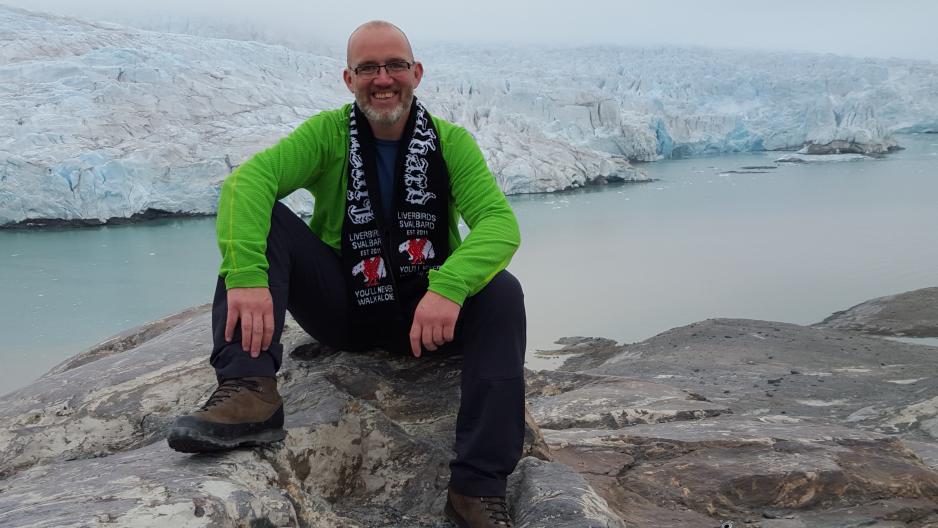
Manager Ronny Brunvoll of Visit Svalbard. (Photo: Private)
“The hearings come too late”
Manager Ronny Brunvoll of Visit Svalbard has congratulated the new Minister of Justice, and thus also new Svalbard Minister, Emilie Enger Mehl with the job. He did so through an open letter in the local daily Svalbardposten. He tells the minister that Visit Svalbard has pointed for a long time already to the fact that the serious tourist industry is under pressure from actors choosing to operate in grey zones, with no local anchoring and in a way that does not allow the creation of value to benefit Svalbard.
Visit Svalbard believes that several of the tools proposed in the two hearings are not well suited to solve the challenges existing in the triangle between tourism, environmental protection, and security. They argue that the authorities’ efforts and regulations have to be more targeted towards the part of the tourist industry that constitutes a threat to the serious [part of the] industry.
Local Council Leader Arild Olsen believes the environmental regulations are already too late, however, that the government now should wait a little longer and extend the hearing deadlines.
“Neither we, the business interest organizations, nor businesses themselves are as per now able to see what the consequences of the proposals may be. They are on their knees after the pandemic. The consequences can be dramatic for local businesses, and perhaps not good enough for nature as the government appears to be in such a rush. Such new regulations may also undermine the Norwegian Svalbard policy. I understand that they want to look towards new management, however, I may not agree with the direction of their message”, he says.
Then what DO you think?
“So far, no one can answer to what the consequences will be for business and society, nor can anyone name a clear advantage for nature and the fauna”, Olsen says.
However, he is clear that if the proposed regulations were to be adopted as law, the state will have to come up with transition funding to help local companies reach the new environmental standard. The NOK 25 millions local businesses received during Covid-19 should have gone to this, but the processes are not coherent, and things are going too fast.
Do you believe it to be a new state strategy, burdening you with all these hearings at the same time?
“No, I am rather surprised that these hearing proposals did not come before. Now, the issues are so large and evident that there is a lot coming at the same time. However, the environmental regulations are not cut in stone quite yet. We can still influence them”, he says.
This year, several hearings have been announced that the Local Council has not known about until their announcing.
“I do not interpret that to be their springing it upon us, but rather as a poor process”, Olsen says.
There is soon almost half a century of worries
The leader of the local council does not wonder about what the [Norwegian] state wants with Longyearbyen or what people should live from in the future.
“This concern has been aired time and again through the 22 years I have lived here, and before my time too. It is soon almost half a century of worries. I have no doubts about Longyearbyen, or about the state for that matter. History contradicts the gloomy predictions. Even though it is not a goal in and of itself for Longyearbyen to grow, the number of inhabitants increases, and business gets more and more diversified. We have more legs to stand on”, he says.
Longyearbyen has a university center, a growing ground station for downloading satellite data, a large construction industry, a brewery, and a major innovation department from Telenor. In addition, state-owned former mining company Store Norske is rock solid, although it is no longer do operate in mining in the future. Now, the company is to operate in renewable energy and property.
But Olsen, too, looks at 2023 with worries in his face.
“It will be demanding for the Longyearbyen community to absorb the fact that we have fewer jobs. It will have repercussions. I believe it might make sense if one were to postpone the closing time for Mine 7”, he says.
The Local Council Leader worries that the conclusion about shutting it down was made without any big, political debate.
“Now, we have just had a change of government, which creates new possibilities or limitations. We all have to be sure that this is a wise move”, says the local Labor politician.
The season is longer, and tourists visit new areas
To mitigate this, the government proposes limiting what areas tourists are allowed to enter (Photo: Basecamp Explorer)
Taking over houses
For private companies, housing has been a bottleneck for years. often, the so-called “competence” employers look for in staff may be whether or not they have their own house. The majority of houses in Longyearbyen are state or publicly owned. In 2019, the Longyearbyen Local Council sent an overview over housing needs to the Svalbard Governor.
It showed that some 60 percent of the then 1,277 houses in Longyearbyen were owned by state and other public actors. 20 percent were owned by private companies renting out to their own staff. The remaining 20 percent belonged to the private owning and letting market.
Central authorities have decided that there will be no building in new areas in Longyearbyen. At the same time, Store Norske and Statsbygg acquire private houses.
“We are interested in being present in Svalbard and on behalf of the state making sure that the archipelago offers solid and safe housing. In addition, it does of course also have to do with ownership and what kind of activity and business the state and Norway want to have there. That will help managing demand for housing. We respond based on needs reported to us by the state”, says Communications Director Hege Njaa Aschim at Statsbygg [a Norwegian state-owned construction and property company].
Does the state want control over a larger part of the housing market in Svalbard?
“No, that is not the reason. Nor do we operate like that. We do not do this for control or power. We acquire because there is a need for housing for state actors”, Aschim responds.
According to her, Statsbygg owns 220 housings in Longyearbyen. This year, it has acquired 59 units. This includes the housings of the Svalbard University Center, for which Statsbygg is taking over the responsibility. Statsbygg is also working to acquire the housing units owned by Longyearbyen Local Council.
Store Norske is the largest housing property owner in Longyearbyen. By 2019, the company owned 381 homes. In the proposed state budget for 2022, it has been granted permission to acquire four apartment and studio buildings from the private operator Longbo.
“The owner wants to sell, and we believe buying makes sense, as the flats are rented out and have a sensible economy. Our strategy is to always consider it when large property portfolios come up for sale”, says Property Manager Sveinung Lystrup Thesen of Store Norske.
He says most of the flats from Longbo are rented out to tourist operators and that Store Norske wants to continue these letting agreements if the purchase goes through.
“Our strategy is not to buy as much as we can or to pick everything on the market. Individual houses or flats are only interesting in exceptional cases such as if they are part of a housing group in which we already own a significant share”, Thesen says.
Store Norske rents out housing to its own staff as well as to local companies.
Terje Aunevik says it is hard to tell whether the state’s purchases will make it harder for local companies.
“Perhaps we can turn it around: I would rather have national control over housing and infrastructure than for the state to fear business development. We often discuss what kind of industries we should have in the future, and fears emerge over new kinds of business – or foreigners. If one controls housing infrastructure, one is comfortable – if that is the goal”, he says.
We now await new political management
Waiting for new political management
The Svalbard Governor is the Norwegian state’s premier representative in Svalbard, however, Lars Fause cannot say anything as to what the state’s future Svalbard strategy will be.
When High North News spoke with him last week, he was ready to inform and respond to questions from the new Minister of Justice, who is also Svalbard Minister, Emilie Enger Mehl.
“We will now await the new political management”, he says.
Fause assumed his position last June. In an interview with Svalbardposten, he said there would be a decision that would not be popular. Now, he says the decision he had in mind back then was the expulsion of the American journalist Mark Sabbatini, who no longer had the means to provide for himself.
“I was not sure how that would be received”, the Svalbard Governor says.
As fot he hearings, Fause says the Governor’s office will not say more than the legal input it has provided to the ministries.
“We relate to the politicians come rain or shine”, he says.
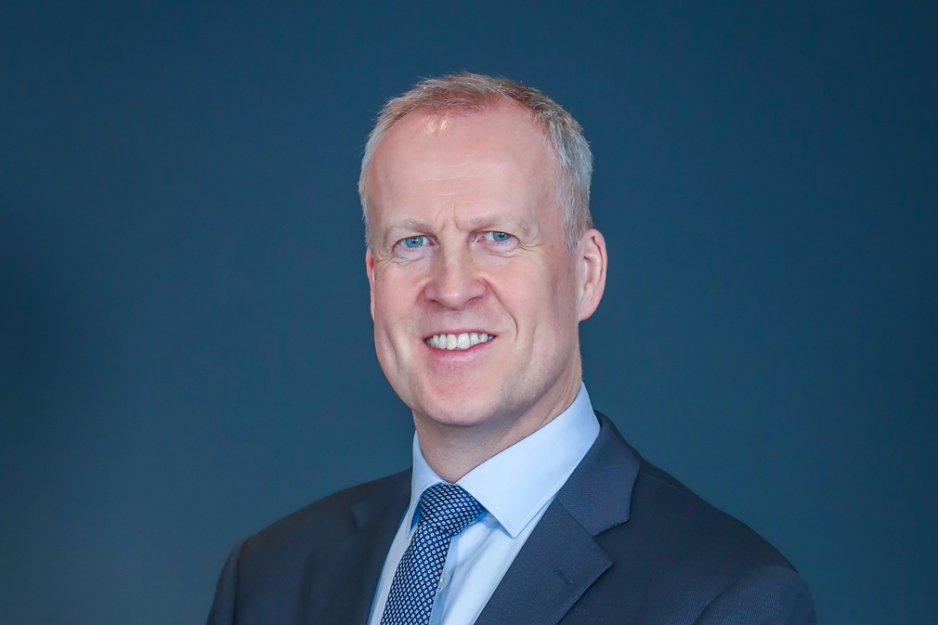
The Svalbard Governor is the Norwegian government’s premier representative on the archipelago and holds the roles as both police chief and chief state administrator. (Photo: Trygve Olsen)
The Hurdal Platform, the foundation for the minority government on which Labor and the agrarian Center Party agreed earlier this month, reads:
“A new boos in the High North will involve a powerful cross-sector initiative, such as education and research, resource management, industry and transportation. Svalbard has major strategic significance for Norway’s opportunities in the High North and Arctic, and the Svalbard Policy is thus a vital part of the government’s High North policy. The government wants to maintain Norwegian settlement in Svalbard.”
Furthermore, the parties write that they want to further develop the Svalbard policy in a way that secures Norwegian interests and Norwegian settlement and maintains a powerful development in the Arctic.
High North News has asked the fresh Svalbard Minister how they want to do this, and about whether the work of the previous government will still stand. According to the press office of the minister, the Minister has full calendar during her first week in office, however, she will probably revert with a response this week.
“Lacking tools”
Local Council Leader Arild Olsen says that despite all the sudden hearings, there are fewer icebergs in the sea between parliament and Svalbard in recent years.
“The flow is better and there are fewer conflicts. Cooperation with the Svalbard Governor is also better, and they have become more professional in their role as governor. That is an advantage for us as a local democracy”, he says.
What has become harder in running the local democracy?
“The fact that we lack tools when society’s structure has become as complex as it is. Therefore, I welcome some new legislation. I grow worried when I see that we do not manage to balance local and central authorities well enough. Then, local democracy loses its power. People must have the opportunity to affect their local community, be it kindergartens, cultural after-school activity, energy supply, where to build houses and what kind of industry we should have.”
“All this happens through the Local Council, not through the ministries, parliament or local representatives of the state, although they are necessary as partners”, Olsen says.
This longread article was originally published in Norwegian and has been translated by HNN's Elisabeth Bergquist.


